Stepping into the brisk alpine wilderness for a hike can feel dauntingly thrilling, particularly when your backpack feels inadequate. I completely understand that feeling of excitement mixed with trepidity; after all, I’ve worn those same hiking boots and felt the same anxious anticipation.
Through countless trips up slopes, plenty of stumbles along rocky trails, and hours upon hours spent pouring over research, I’ve learned which essentials are critical to every successful high-altitude venture.
Consider this blog as your trusty guidebook — it’s packed with nine essential tips that will help you pack smartly, prioritize safety on unpredictable terrain and equip you with everything else needed to conquer any towering mountain trail.
Are you ready to ascend new heights? Let’s buckle up our boots and traverse these trails together!
Key Takeaways
- A headlamp is a must – have for hiking in the alpine as it keeps your hands free and provides reliable light.
- It’s important to bring extra food and a camp stove on your hike to keep up your energy and have hot meals.
- Fire starting materials such as matches, fire starter kits, tinder, kindling, and an ignition device are essential for warmth and cooking while hiking.
- Navigation know – how is crucial for staying on the right path in the alpine. Bring tools like maps, compasses, GPS devices, and personal locator beacons.
- A basic first aid kit should always be packed for any injuries or emergencies that may occur during the hike.
- Wearing appropriate clothing such as sun-protection clothing, sturdy hiking boots or trail shoes with ankle support, comfortable socks, and protective eyewear is vital for a safe and comfortable hiking experience.
- Choose footwear based on the length of the hike and terrain. Trail shoes are suitable for short day hikes while all-around hiking boots are recommended for longer hikes or challenging terrains.
- Pack extra food and water to stay nourished and hydrated on the trail. Aim to drink at least two quarts (liters) of water per day.
- Carry navigation tools like maps, compasses, altimeter watches if needed, GPS devices, and personal locator beacons to navigate unfamiliar terrain safely.
- Be prepared with tools like knives or multi – tools along with repair items like safety pins, duct tape,and fabric repair tape in case of unexpected situations or gear malfunctions while on the trail.
What are The Ten Essentials for Hiking?
The Ten Essentials for Hiking include a headlamp, extra food and camp stove, fire starting materials, navigation know-how, first aid and emergency supplies, appropriate clothing, footwear, food and water, and navigation tools.
Headlamp
A headlamp is a must-have on your hiking trip. It keeps your hands free while you set up camp or cook at night. This tool helps you find a path in the dark. Even when the sun is out, keep it in your bag for safety.
It comes in handy if things take longer than planned and you need to climb in low light. A headlamp gives reliable light so don’t hike without one!
Extra food and camp stove
Bringing extra food is a must for all hikers. Extra snacks keep up our energy and mood when we hike. Foods like trail snacks and emergency food reserves are good to have ready in your backpack.
A camp stove also needs to go with us on the trip. With it, you can heat up food or just boil water for a hot drink. It’s not hard to carry because most are small and light. So make sure you pack your outdoor cooking equipment before hitting the trails!
Fire starting materials
Fire starting materials are a must-have for any hiker. They ensure you can start a fire when the need arises. A fire can keep you warm at night and cook food. I always pack a few matches in my bag.
But, there’s more to it than just carrying matches.
A good fire starter kit is also important. It will make your task easier and faster. Don’t forget about tinder and kindling too! Dry grass, bark, or small twigs work well as tinder while larger sticks serve as great kindling.
Packing an ignition device like a lighter might come handy too!
Your safety matters above all else though! Ensure that you use these tools carefully to avoid mishaps.
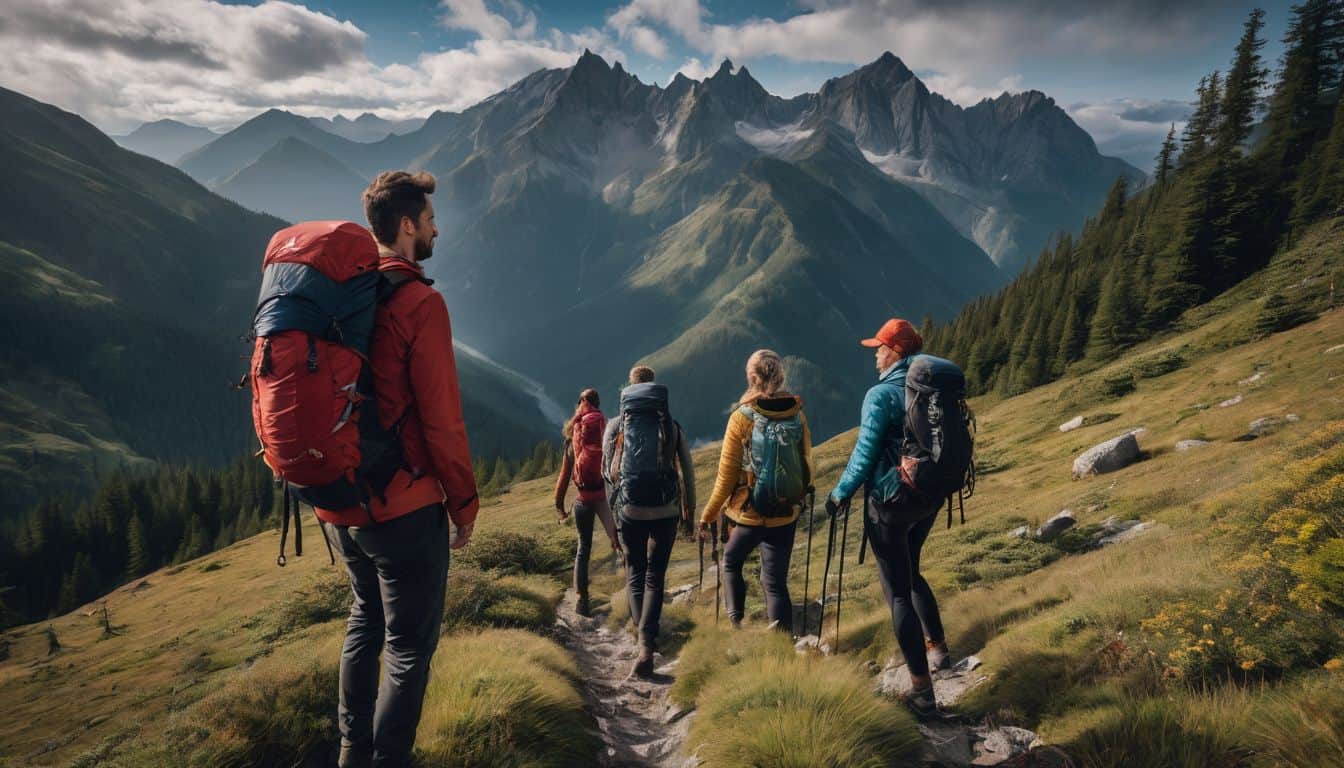
Navigation know-how
Navigation is a crucial skill to have when hiking in the alpine. To make sure you stay on the right path, it’s important to be prepared with the right navigation tools. Some key essentials include a map, compass, GPS device, and personal locator beacon.
These tools will help you find your way and ensure you don’t get lost. It’s also important to have a plan and tell someone you trust about your route before heading out. By being prepared and knowing how to navigate properly, you can have a safe and enjoyable hiking experience in the alpine.
First aid and emergency supplies
One essential item to bring on every hike is a basic first-aid kit. It’s important to be prepared for any injuries or emergencies that may arise while you’re out on the trail. Your first-aid kit should include items like bandages, adhesive tape, gauze pads, antiseptic wipes, and pain relievers.
Additionally, it’s a good idea to have a multi-tool in your pack. This tool can come in handy for gear repair as well as helping with first aid situations. Remember to check your first-aid kit regularly and replenish any supplies that are running low so you’re always ready for whatever comes your way on the trail.
Appropriate clothing
When it comes to hiking, wearing the right clothing is essential. Appropriate clothing is actually one of the Ten Essentials for hiking. It’s important to protect yourself from the elements and dress in a way that keeps you comfortable and safe on the trail.
To start with, make sure to wear sun-protection clothing to prevent sunburn and minimize sun exposure. Opt for long-sleeved tops and pants that provide UV protection. This will shield your skin from harmful rays, especially when hiking in sunny or high-altitude areas.
For footwear, invest in a good pair of hiking boots or trail shoes. They should have sturdy soles and ankle support to prevent injuries while walking on uneven terrain. Comfortable socks are also crucial for preventing blisters.
Footwear
Choosing the right footwear is an essential part of hiking. It can have a big impact on your comfort and safety during a hike. When it comes to hiking shoes or boots, you want to make sure they provide traction, support, and protection.
For short day hikes that don’t involve heavy packs or technical terrain, trail shoes are a good choice. They are lightweight and offer flexibility. However, for longer hikes or more challenging terrain, all-around hiking boots are recommended.
These boots provide more ankle support and stability. So when preparing for a hike, remember to choose footwear that suits the type of hike you’re planning and offers the necessary features for a comfortable experience on the trails.
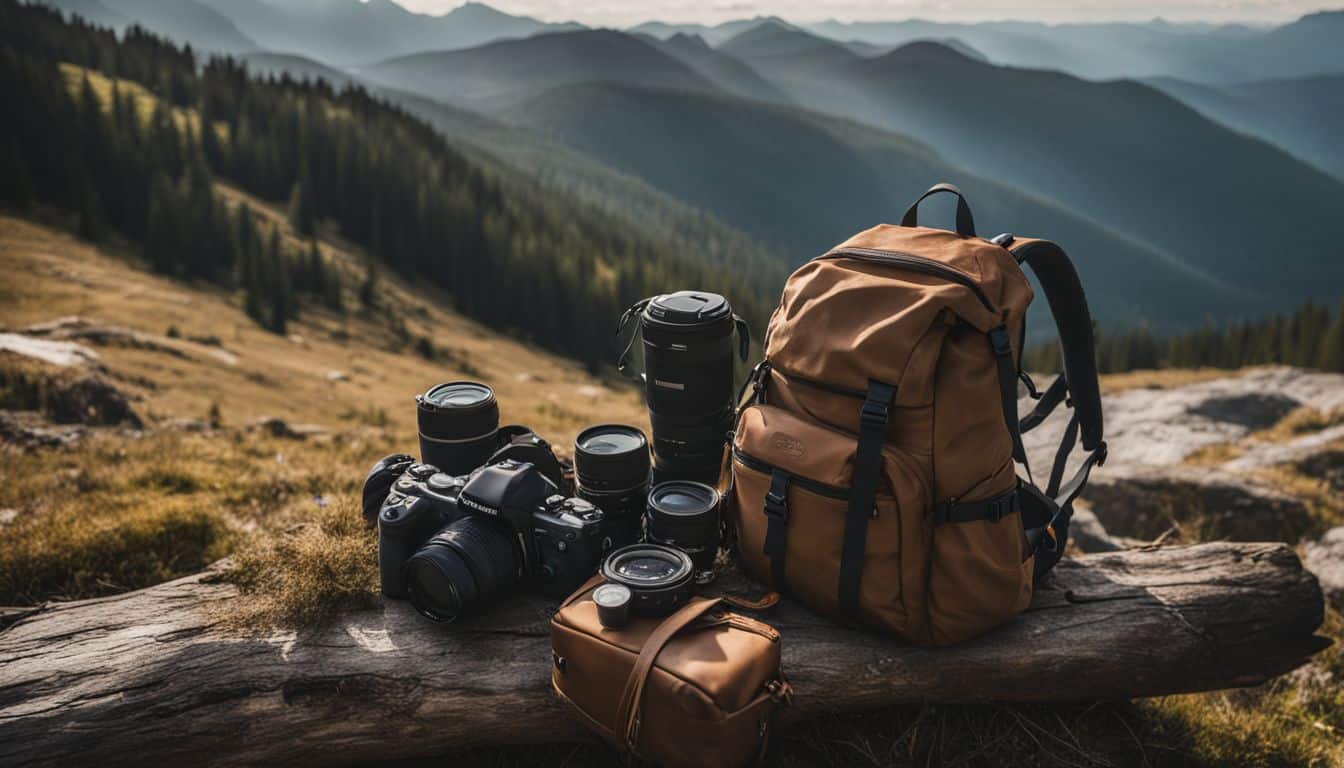
Food and water
When you’re hiking, it’s important to pack extra food and water. These are two of the Ten Essentials for Hiking and play a crucial role in keeping you nourished and hydrated on the trail.
Pack nutritious snacks like trail mix, nuts, and granola bars that are lightweight and easy to carry. Staying hydrated is equally important, so make sure to bring at least one water bottle or collapsible water sack with you.
Aim to drink at least two quarts (liters) of water per day to stay properly hydrated. Having extra food and water is not only essential for your comfort but also for potential emergencies or unexpected delays during your hike.
Navigation tools
When it comes to hiking in the wilderness, having the right navigation tools is essential. These tools include a map, compass, altimeter watch, GPS device, and personal locator beacon.
They have revolutionized backcountry navigation and play a crucial role in helping hikers find their way through unfamiliar terrain and back to safety. Carrying these tools ensures that you can stay on the right path and avoid getting lost in the wilderness.
Some hikers may also choose to carry additional navigational tools like an altimeter or GPS receiver. With these tools by your side, you can confidently explore and navigate through nature’s wonders.
Tools and repair items
As a hiking enthusiast, it’s important to be prepared for unexpected situations and equipment malfunctions while on the trail. That’s why having the right tools and repair items is crucial.
A knife or multi-tool is essential for various purposes like gear repair, food preparation, first aid, and even making kindling. Safety pins, needle and thread, duct tape, wire, and fabric repair tape are also useful for fixing any rips or tears in your gear.
Don’t forget to pack a basic repair kit with items like scissors and screwdrivers too. Being equipped with these tools will ensure that you can handle any repair needs that may arise during your alpine hikes.
How to Choose the Right Hiking Gear
Choosing the right hiking gear is crucial for a successful alpine adventure. From determining your water source to considering capacity and replacement frequency, there are important factors to keep in mind.
Read on to find out more about selecting the perfect gear for your next hike!
Determine the source of your water
To ensure you have safe and clean water for your hiking trip, it’s crucial to determine where you’ll get your water from. Look for potable water sources before you start your hike, and fill up your bottles or reservoirs there.
It’s also a good idea to plan for refills at known potable water sources along your route. But if you’re in an area without access to safe water, bring a lightweight water filter so you can collect and purify water from natural sources.
Remember to carry enough water or use purification tablets if there are no reliable water sources on the trail.
Identify the contaminants you need to remove
When choosing the right hiking gear for your alpine adventure, it’s important to consider the contaminants you may encounter in the water sources along the way. This includes bacteria, parasites, and other impurities that can make you sick if consumed.
To ensure safe drinking water during your hike, invest in a reliable water filter or purification system that is capable of removing these contaminants. It’s also helpful to have knowledge about the specific types of contaminants found in the area you’ll be hiking in so you can choose a filtration method that is effective against them.
By taking this extra step to identify and remove potential contaminants from your water supply, you can stay hydrated and healthy throughout your journey in the great outdoors.
Consider capacity and replacement frequency
When choosing hiking gear, it’s important to consider the capacity and how often you may need to replace it. You want gear that can hold everything you need for your hike without being too heavy or bulky.
Think about how much food, water, and other essentials you’ll need and make sure your gear has enough space. It’s also a good idea to choose gear that is durable and built to last, so you don’t have to replace it too frequently.
This way, you can enjoy your hikes knowing that you have reliable gear that meets your needs.
Make Safety a Priority
Prioritize safety on the trail by making noise to alert wildlife of your presence, keeping earbuds out to stay aware of your surroundings, not sharing your location with strangers, and trusting your instincts.
Make noise on the trail
When hiking in the alpine, it’s important to make noise on the trail. This helps to alert wildlife, like cougars or mountain lions, that you’re there. Making noise periodically while hiking can be a good safety measure.
It’s especially important in the alpine because there’s a higher chance of encountering wildlife. By making noise, you can reduce your risk of surprising them and potentially avoid any dangerous situations.
So remember to talk, sing, or use bells to make sure animals know you’re coming. Stay safe out there!
Keep earbuds out
Earbuds might seem convenient to have while hiking, but they can actually be harmful to your ears. They can cause skin irritations and even ear infections if not cleaned properly. Also, wearing earbuds while walking or hiking can make you more prone to motion sickness.
But the most significant concern is the potential damage to your hearing. Listening to music at high volumes for prolonged periods through earbuds can lead to hearing loss and tinnitus, a constant ringing in the ears.
So, it’s best to keep your earbuds out and enjoy the sounds of nature instead.
Don’t tell strangers your location
One important hiking safety tip is to never tell strangers where you are going. It’s always better to keep your plans and location to yourself, especially when you’re out on the trails.
Trustworthy individuals might not always be easy to identify, so it’s crucial to exercise caution and prioritize your personal safety. Instead of sharing your hiking destination with strangers, it’s recommended that you inform a responsible person back at camp or home about your plans.
Make sure to provide them with detailed information like the names and locations of campsites and trailheads. By keeping this information private from strangers, you can ensure a safer hiking experience while still enjoying the great outdoors without worry about potential risks or privacy concerns.
Go with your gut and trust your instincts
Trusting your gut and instincts is crucial when it comes to hiking. As a hiking enthusiast, you need to rely on your intuition and make decisions based on what feels right. Gut instincts are those feelings we get that guide us in making better choices.
Sometimes, our analytical reasoning might not provide all the answers, but listening to our inner voice can lead us down the right path. It’s important to remember that gut instincts are often accurate and can help keep you safe while out on the trails.
So, trust yourself and go with your gut when making decisions during your alpine hikes.
Hydration Matters
Staying hydrated is crucial while hiking in the alpine. Choose salty snacks and carry a proper water bottle and filter to ensure you have enough fluids on the trail. Want to learn more about staying hydrated during your hike? Keep reading!
Choose salty and easy to digest snacks
When hiking in the alpine, it’s important to choose snacks that are both salty and easy to digest. Salty snacks like pretzels can provide valuable electrolytes that help with hydration on the trail.
Dried fruits, nuts, and seeds are also great options for trail foods that provide electrolytes while being easy on your stomach. Protein and carb-dense bars with ingredients like nuts, dried fruit, and berries can give you a boost of energy during your hike.
Remember to choose calorie-dense snacks with protein and healthy fats to keep you fueled up for mountaineering adventures.
Carry a proper water bottle and filter
Carrying a good water bottle and filter is crucial for staying hydrated during alpine hiking. When you’re out on the trail, it’s important to have access to clean drinking water. Having a water filtration system ensures that you can safely drink water from natural sources like streams or rivers.
Additionally, having a proper water bottle allows you to carry enough water for your hike and easily refill it along the way. A hydration bladder is another great option as it holds more water and fits conveniently in your backpack.
Remember, staying properly hydrated is essential for enjoying your hike and maintaining energy levels throughout the day. So make sure to pack a reliable water bottle and filter before hitting the trails!
Layering Clothes is Key
When hiking in the alpine, it’s crucial to wear weather-appropriate clothing and utilize layers for optimal comfort and protection. From base layers to insulating jackets, find out how layering can enhance your hiking experience!
Wear weather-appropriate clothing
When going alpine hiking, it’s important to wear clothing that is suitable for the weather conditions. Layering your clothes is key to staying comfortable and safe. Make sure you have insulating layers like thermal underwear and fleece jackets to keep you warm in colder temperatures.
Waterproof outer layers, such as shell jackets, are essential to protect against rain or snow. Choose breathable fabrics that have moisture-wicking properties to keep you dry and comfortable during strenuous hikes.
Opt for synthetic materials that dry quickly if they get wet. Don’t forget to wear appropriate footwear as well! By wearing weather-appropriate clothing, you can enjoy your alpine hike no matter what Mother Nature throws at you.
Wear hiking footwear
When heading out for an alpine hike, wearing the right footwear is crucial. Hiking boots or shoes that provide support, comfort, and traction are essential for a successful hiking experience.
Look for hiking footwear that is supportive, comfortable to wear for long periods of time, and has good traction on different types of terrain. They should also provide protection from rocks and roots along the trail.
It’s important to choose footwear that is suitable for the specific location and weather conditions you’ll be hiking in. So take your time to find the perfect pair of hiking shoes or boots before hitting the trails.
Utilize layers
Layering clothing is a key strategy for staying comfortable while hiking in the alpine. When I go out on the trails, I always make sure to utilize layers to regulate my body temperature and protect myself from the elements.
Layering involves wearing different types of clothing that serve specific purposes. First, there’s the base layer, which helps wick moisture away from your body, keeping you dry and comfortable.
Then, there’s the middle layer, which provides insulation and warmth to keep you cozy when temperatures drop. Finally, there’s the outer layer, which acts as a shield against wind, rain, and other outdoor elements.
Know How To Navigate
To navigate successfully while hiking, bring a map and download GPS apps for extra guidance. Remember to have a plan in place and inform someone you trust about your route.
Bring a map
Having a map is essential for alpine hiking. Maps provide detailed information about the geographical features of a region and can help hikers find their way along hiking trails. Topo maps are commonly used for alpine hiking, as they show elevation contours and can assist with navigation in the backcountry.
Google Maps can also be useful for determining driving routes, parking spots, and gaining a general understanding of the hiking trail. Additionally, Gaia GPS is a helpful tool for self-navigation while hiking, providing access to detailed maps and tracking features.
So remember to bring a map on your next alpine adventure!
download GPS apps
When it comes to hiking, having the right tools and knowledge is essential for a successful and safe adventure. One important tool that can greatly enhance your navigation skills is a GPS app.
Downloading GPS apps like Gaia GPS, Hiking Project, Green Tracks, A-GPS Tracker, or AlpineQuest GPS Hiking Lite can help you stay on track and find your way on the trails. These apps provide you with accurate mapping information, trail routes, and even real-time tracking of your progress.
With these apps installed on your phone or device, you can confidently explore new hiking trails and enjoy the great outdoors without getting lost. So make sure to download a reliable GPS app before your next hiking trip!”.
Have a plan and tell someone you trust
Before embarking on an alpine hiking trip, it’s crucial to have a plan in place and share it with someone you trust. This ensures that there is someone who knows your whereabouts and expected itinerary, which can be essential in case of emergencies or if you don’t return as planned.
In your plan, include details such as the length and difficulty level of the hike, elevation gain, and terrain conditions. Additionally, studying maps or brochures can provide guidance and help you understand the route better.
Don’t forget to consider practical aspects like parking locations and restroom availability when planning your hiking adventure. Taking these precautions will give you peace of mind during your hike while allowing others to know where you are for safety purposes.
Sun Protection
Wear a hat, apply sunscreen, and don’t forget your sunglasses to protect yourself from the sun’s harmful rays while hiking.
Wear a hat
Wearing a hat is really important when you go alpine hiking, especially for protecting yourself from the sun. When you’re out in nature, the sun’s rays can be strong and harmful to your skin.
Wearing a hat helps shield your head, face, ears, and neck from too much sun exposure. It’s best to choose hats with wide brims that provide shade to these areas. Brimmed hats or legionnaire style hats are great options because they offer extra protection.
By wearing a hat while hiking in the mountains, you can enjoy the outdoors safely and lower your risk of sunburn or other skin problems caused by UV rays. So don’t forget to pack your favorite hat before heading out on your next adventure!
Wear sunscreen
When hiking in the alpine, it is crucial to protect your skin from the harmful effects of the sun. UV rays can cause skin damage, including sunburn and an increased risk of skin cancer.
So, make sure to wear sunscreen with a high Sun Protection Factor (SPF) of at least 30. Look for broad-spectrum sunscreens that protect against both UVA and UVB rays. Keep in mind that no sunscreen is completely waterproof or sweatproof, so remember to reapply regularly throughout your hike.
This becomes even more important at higher altitudes where UV radiation can be more intense. So, don’t forget to pack and apply sunscreen before hitting the trails!
Wear sunglasses
When hiking in alpine areas, it’s really important to wear sunglasses. Not only do they make you look cool, but they also protect your eyes from the sun’s harmful UV rays. Did you know that prolonged exposure to UV light can increase the risk of developing cataracts? That’s why wearing sunglasses is so crucial.
Plus, if you’re hiking in snowy conditions, staring at all that bright white snow can cause “snow blindness.” It’s like getting a sunburn on your eyes! Ouch! So make sure to choose sunglasses that offer UV ray protection and keep your eyes safe while enjoying the great outdoors.
Comprehensive Alpine Hiking Checklist
Here’s my checklist for alpine hiking:
- Headlamp: Always carry a headlamp with extra batteries for emergencies or when it gets dark.
- Extra food and camp stove: Pack extra food in case of unexpected delays and a camp stove for cooking meals.
- Fire starting materials: Bring fire starters, like waterproof matches or a lighter, to start a fire if needed.
- Navigation know-how: Learn basic navigation skills and carry a map and compass to find your way on the trails.
- First aid and emergency supplies: Have a well-stocked first aid kit with essential items for treating injuries and emergencies.
- Appropriate clothing: Wear layered clothing suitable for changing weather conditions in the alpine environment.
- Footwear: Choose sturdy hiking boots that provide ankle support and grip for uneven terrain.
- Food and water: Carry enough food and water to stay hydrated and energized during your hike.
- Navigation tools: Use GPS apps or other navigation tools to help you navigate through unfamiliar trails.
Don’t Be Intimidated
Don’t let the challenges of alpine hiking intimidate you – take it slow, pack the right gear, bring the 10 essentials, and don’t be afraid to go alone.
Take it slow
When it comes to alpine hiking, it’s important to take it slow. I can’t stress this enough. Alpine trekking can be challenging, especially if you’re not used to high altitudes or rough terrains.
So, don’t rush the experience. Take the time to enjoy the stunning views and immerse yourself in nature. It’s also crucial to pace yourself physically. Don’t push your body too hard or try to cover long distances in a short amount of time.
Pay attention to trail distances and plan accordingly so that you have enough energy for each day’s hike. And remember, choosing suitable camping spots is essential for a good night’s rest, so take some extra time when looking for the perfect campsite along your route.
Pack the right gear
When hiking in the Alps, it’s important to pack the right gear. This will ensure that you’re prepared for any situation and can make your hike more enjoyable. Some essential items to bring include a headlamp with extra batteries, extra food with a camp stove, and rain gear.
These items will help you navigate in low light conditions, stay nourished throughout your hike, and keep you dry if it starts raining. Additionally, don’t forget to pack appropriate clothing and footwear for the terrain and weather conditions.
Having the right gear will give you confidence on your alpine adventure and allow you to fully enjoy the beauty of nature around you.
Bring the 10 essentials
When going alpine hiking, it’s crucial to bring the 10 essentials with you. These essentials include navigation tools like a map and compass or GPS, a headlamp for when it gets dark, sun protection such as sunscreen and a hat, a first aid kit in case of injuries, a pocket knife for various tasks, firestarter materials for emergencies, an emergency tent for shelter, extra rations of food in case you get stranded or lost, and of course, appropriate hiking boots.
These essentials are important because they help you navigate safely on the trail and prepare you for unexpected situations like sudden weather changes or minor injuries. So make sure to pack these items before heading out on your next hike!
Don’t be afraid to go alone
Solo backpacking is something that shouldn’t be feared. While hiking in a group can provide a sense of security, exploring on your own can be equally rewarding. It allows you to set your own pace, choose your own route, and truly immerse yourself in nature.
It’s important to do your research and gain knowledge about the area you plan to hike in order to feel confident and prepared. By taking the necessary safety precautions, packing the right gear, and following the tips provided in this article, you can overcome any fear of hiking alone and embark on an incredible adventure with confidence.
So don’t let fear hold you back – embrace solo travel and enjoy the freedom it brings!
Conclusion on Alpine Hiking Checklist
In conclusion, having a well-prepared alpine hiking checklist is essential for a successful adventure. By following the nine tips mentioned in this article, such as carrying the Ten Essentials and choosing appropriate gear, hikers can ensure their safety and enjoy their time in the wilderness.
So grab your backpack and get ready to conquer those majestic peaks!
FAQs on Alpine Hiking Checklist
1. What should I include in my alpine hiking checklist?
In your alpine hiking checklist, you should include items such as appropriate clothing and footwear, navigation tools (like a map and compass), extra food and water, first aid supplies, a headlamp or flashlight, and emergency communication devices.
2. How long does it take to complete an alpine hike?
The duration of an alpine hike can vary depending on factors like the trail’s length and difficulty level. It is best to research the specific trail beforehand for estimated timeframes.
3. Are there any specific safety precautions I should take while hiking in the alpine region?
Yes, while hiking in the alpine region, it’s important to be prepared for changing weather conditions by wearing layers of clothing and carrying rain gear. Additionally, stay hydrated, be aware of altitude sickness symptoms, avoid getting too close to cliffs or steep edges, and let someone know your itinerary.
4. Can I bring my dog with me on an alpine hike?
Bringing dogs on an alpine hike depends on individual trail regulations. Some trails allow leashed dogs while others do not permit them due to potential wildlife disturbance or safety concerns. It’s important to check the rules before bringing your furry friend along.
5. What are some essential tips for successfully completing an alpine hike?
Some essential tips for successfully completing an alpine hike include planning ahead by studying maps and trail conditions; starting early in the day to allow ample daylight; pacing yourself; staying hydrated; taking regular breaks; being mindful of signs of exhaustion or altitude sickness; respecting wildlife and their habitats; leaving no trace by packing out all trash; and following outdoor ethics guidelines.

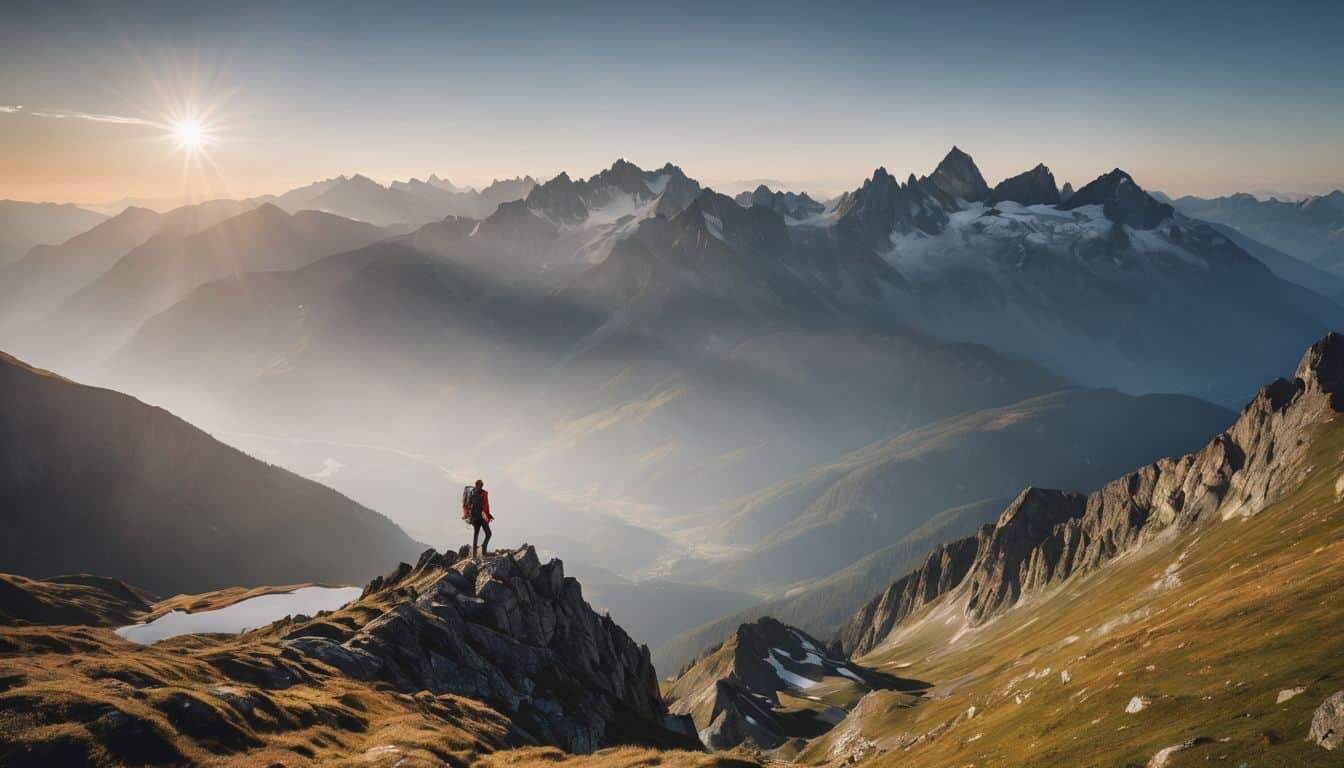
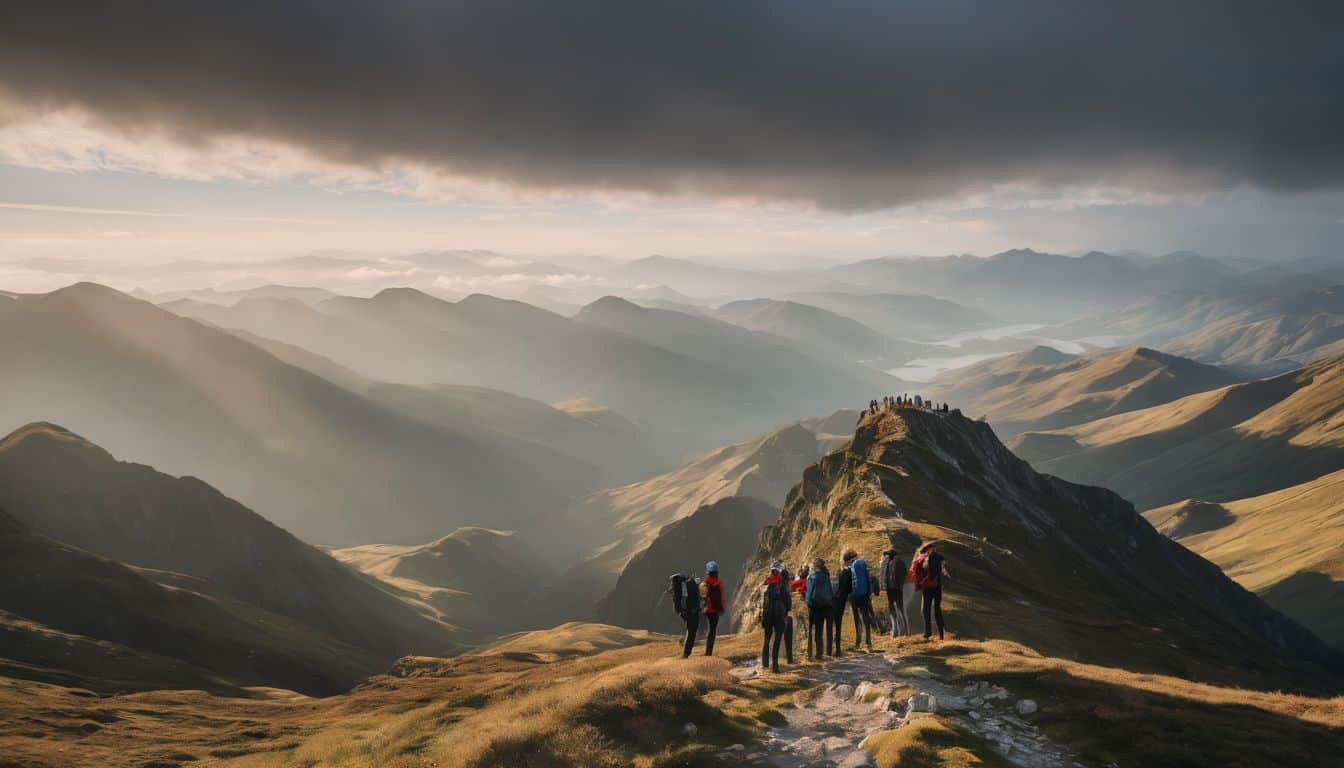
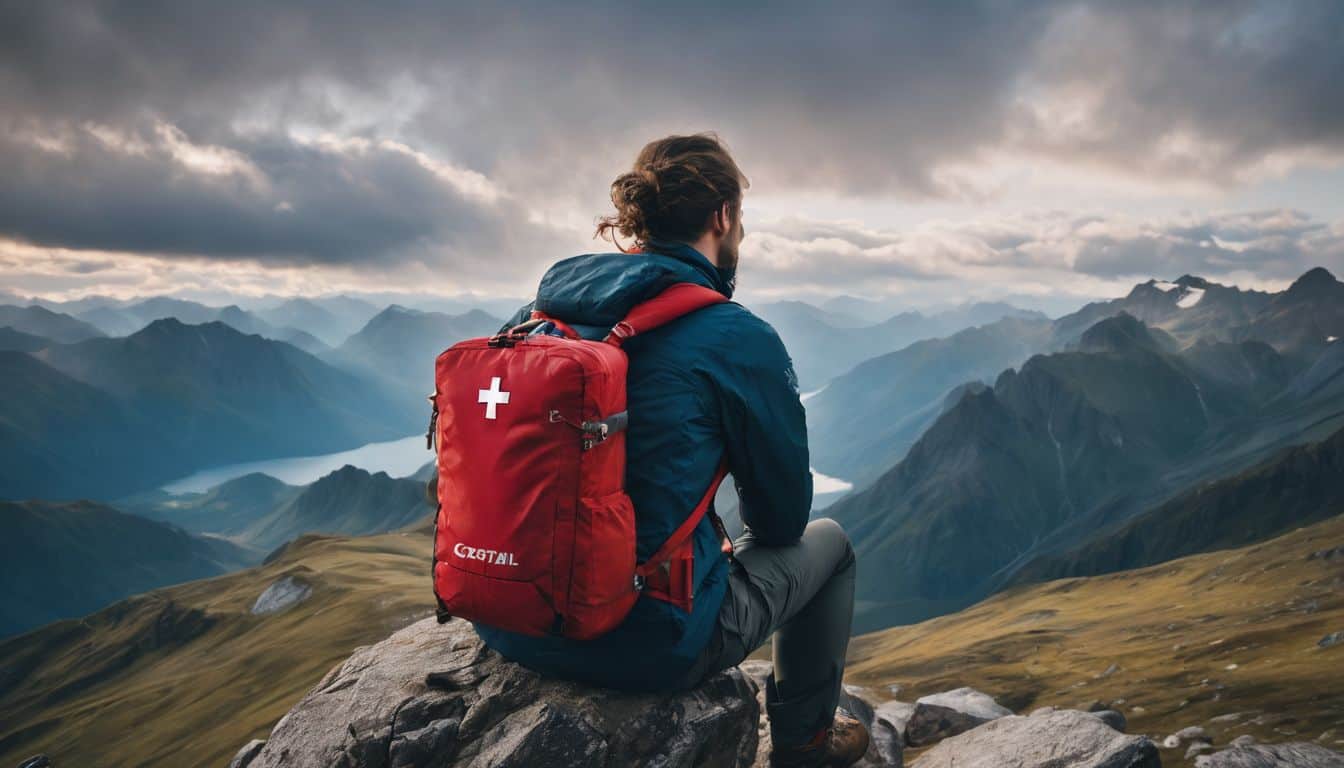
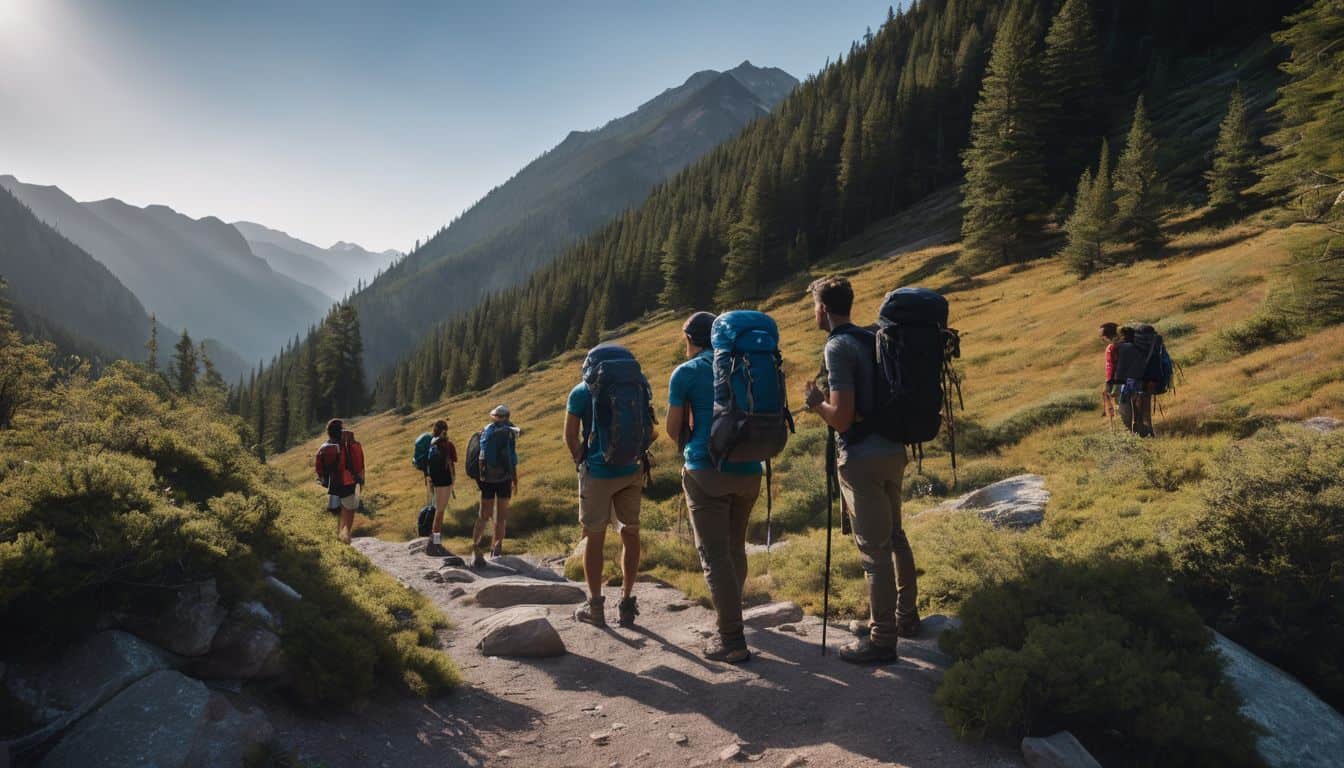
Leave a Reply